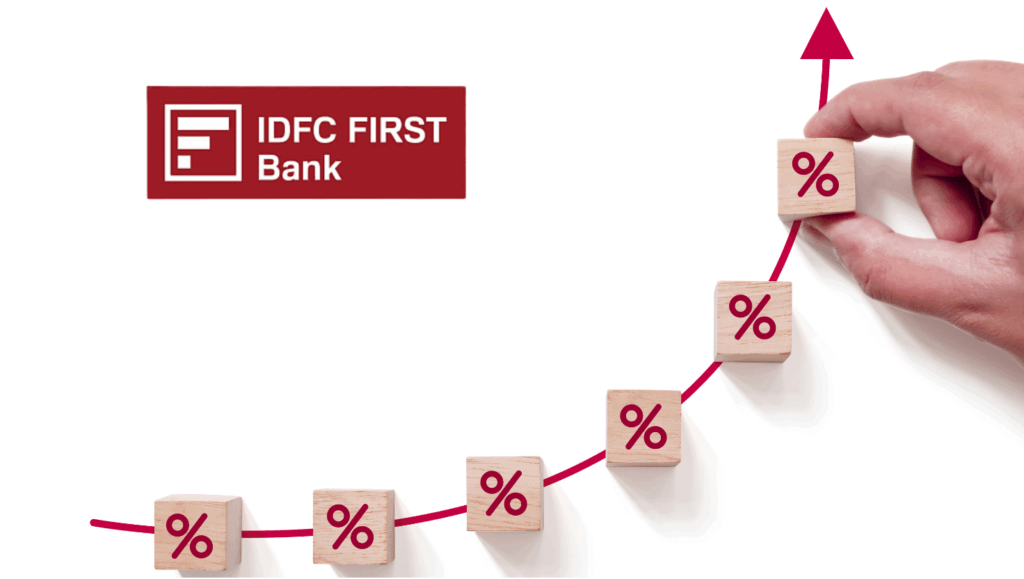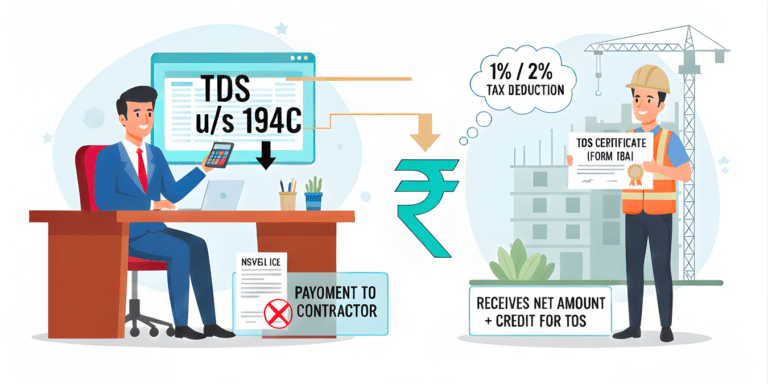
Filing ITR and claiming TDS refunds for a deceased person in India with our 2025 guide! Unravel the enigma of tax obligations left behind, from legal heir registration to unlocking thousands in refunds. With the extended September 15, 2025 deadline, learn step-by-step how to navigate the e-Filing portal, avoid penalties, and secure financial closure.
The shocking reality is that even in death, India’s Income Tax Act continues to cast its shadow over families, creating obligations that surviving members cannot ignore. This is not just a legal nuance; it’s a financial reality that can turn grief into a prolonged battle with the bureaucracy.
According to the latest data from the Income Tax Department, for the assessment year 2025-26, the filing deadline has been extended to September 15, 2025, due to technical issues and high volume. As of August 20, 2025, 3.29 crore ITRs have been filed, with 1.13 crore processed. This surge underscores the scale—among these, hundreds of cases involve deceased taxpayers, a number that grows with India’s aging population.
Many believe “death ends all,” but in tax terms, it’s only the beginning for heirs. This post will reveal hidden truths, practical steps, and tips to navigate, ensuring you, the reader, are prepared.
What Happens When Death Interrupts the Tax Filing Season?
Your loved one passes mid-year, ITR unfinished. Does the obligation vanish? No. The Income Tax Act, 1961, ensures continuity. Legal heirs step in, facing the deceased’s tax liabilities.
The suspense builds. Families often overlook this, leading to financial shocks. Penalties under Section 270A for under-reporting can hit 200% of tax evaded. Interest under Section 234A accrues at 1% monthly. Lost refunds? They could be substantial, especially with TDS deductions.
Latest data from the Income Tax Department reveals: For AY 2025-26, filing deadline extended to September 15, 2025, due to glitches. As of August 20, 2025, over 3.29 crore ITRs filed, with 1.13 crore processed. Amid this surge, deceased cases rise, affecting thousands.
Why care? In India, death and taxes entwine tightly. Understanding protects inheritance.
Can the Departed Still Owe Taxes to the Government?
Yes, alarmingly so. The deceased’s income till death date remains taxable. Legal heirs must file ITR on behalf, or face consequences.
Under the Income Tax Act, 1961, the legal heir steps into the shoes of the deceased as the representative assessee. This role mandates settling tax liabilities for income earned up to the date of death. If the deceased’s income exceeded the basic exemption limit—₹2.5 lakh for individuals, ₹3 lakh for senior citizens, or ₹5 lakh for super senior citizens under the old regime—filing ITR is mandatory. For FY 2024-25 (AY 2025-26), the Central Board of Direct Taxes (CBDT) extended the deadline due to e-Filing portal upgrades, offering relief but urging prompt action to avoid penalties.
Consider the numbers. Direct tax collections for FY 2025-26, as on August 11, 2025, show net collections of 6.64 trillion rupees, down 4% year-on-year. But for families, it’s personal. If income crossed thresholds, filing is mandatory.
Shocking fact: Even refunds belong to heirs, but claiming them demands navigation through bureaucracy.
Who Qualifies as a Legal Heir?
The hierarchy is structured:
- Primary: Spouse.
- Secondary: Children (sons, daughters, including adopted).
- Tertiary: Parents.
- Last Resort: Will executors or court appointees.
Proof required: Birth, marriage certificates. In disputes, courts decide.
Unique Indian twist: In joint families, HUF considerations may apply if deceased was karta.
Who can take on this responsibility? Typically, it’s the spouse, children, or nominees named in a will. Without a will, succession laws kick in—Hindu Succession Act for Hindus, Indian Succession Act for others. A legal heir certificate, issued by a local Tehsildar or court, is your key to unlocking the e-Filing portal. This often-overlooked document is non-negotiable.
Death ends life, but not tax ties. Section 159 mandates heirs pay what the deceased owed. This “representative assessee” role transfers liabilities.
Section 159 was introduced to ensure the government doesn’t lose revenue due to death. In the Income Tax Bill, 2025, it’s recodified as Clause 159, with minor modernizations for digital age, but the obligation remains intact.
The Step-by-Step Process: Navigating the Bureaucratic Maze
The process is a suspenseful journey through paperwork and portals. One wrong step, and rejection awaits.
But with guidance, it’s manageable. Let’s break it down.
Phase 1: Securing Legal Heir Status
First, gather the arsenal of documents.
Document Assembly Checklist:
- Original death certificate from registrar.
- PAN cards of deceased and heir.
- Legal heir certificate from revenue authorities (tehsildar).
- Relationship proof like birth or marriage certificate.
- Self-attested affidavit on Rs 100 stamp paper.
Why affidavit? To affirm no other heirs contest.
The Registration Process:
- Access the Income Tax e-filing portal at incometax.gov.in.
- Navigate to Authorized Partners → Register as Representative Assessee.
- Select category “Deceased (Legal Heir)”.
- Upload all docs in a single ZIP file, max 5 MB.
- Verify with OTP on heir’s mobile linked to Aadhaar.
Processing Timeline: Typically 3-7 working days. But latest updates show delays in peak season; as per August 2025 stats, portal handles millions daily.
Rejections? 30% due to incomplete ZIP or mismatched PAN.
Tip: Use PDF format for clarity.
Phase 2: Income Computation and ITR Filing
Now, the math. Income bifurcation is crucial.
The law mandates clear distinction:
| Period | Tax Treatment | Filing Responsibility |
| April 1 to Date of Death | Taxable in deceased’s hands | Legal heir files on behalf |
| After Date of Death to March 31 | Taxable in legal heir’s hands | Legal heir includes in own ITR |
Phase 3: ITR Form Selection and Filing
Form choice depends on income complexity.
Form Selection Criteria:
- ITR-1 (Sahaj): Salary, pension, one house, interest up to Rs 50 lakh.
- ITR-2: Capital gains, multiple properties, foreign assets.
- ITR-3: Business or profession income till death.
Filing Mechanics:
- Login as legal heir, switch to “representative assessee” mode via dashboard.
- Select AY 2025-26 for FY 2024-25.
- Enter deceased’s income details up to death, attach proofs.
- Calculate liability, apply exemptions like senior citizen rebates.
- Submit and e-verify using Aadhaar OTP, net banking, or Digital Signature Certificate (DSC).
Deadline for AY 2025-26: September 15, 2025 (extended). Belated till December 31 with Rs 5,000 fee.
Appealing tip: Use pre-filled data from portal for accuracy.
The Income Puzzle
What income must you report? All earnings from April 1 to the date of death—salary, interest, rentals—must be included in the deceased’s ITR. Post-death income, like accrued FD interest, belongs to the estate or legal heir, requiring separate reporting. Missing this distinction could trigger notices under Section 148 for reassessment. In FY 2024-25, over 8 crore ITRs were filed by July, yet deceased filings remain under 1%, signaling awareness gaps. Don’t let undisclosed income haunt you.
Latest thresholds for mandatory ITR filing:
- New Tax Regime: Income exceeding Rs 3 lakh (basic exemption; no tax up to Rs 7 lakh with rebate u/s 87A).
- Old Tax Regime: Exceeding Rs 2.5 lakh (general), Rs 3 lakh (seniors 60-79), Rs 5 lakh (super seniors 80+).
Note: Budget 2025 proposes 0-Rs 4 lakh nil for new regime in AY 2026-27, but AY 2025-26 sticks to current.
Registering as a Legal Heir
The journey begins on the Income Tax e-Filing portal. Log in with your credentials, navigate to Authorised Partners > Register as Representative, and select Deceased (Legal Heir). Upload critical documents: death certificate, deceased’s PAN, your PAN, and legal heir proof. A notarized English/Hindi translation is needed if documents are in regional languages. Approval takes 7-10 days, but incomplete submissions lead to rejections. Pro tip: Ensure scans are clear and under 5MB to avoid delays.
Legal Heir Certificate vs. Succession Certificate
Understand the distinction for "legal heir tax obligations".
| Aspect | Legal Heir Certificate | Succession Certificate |
| Issuing Authority | Revenue Department/Municipal Corporation | District Court under Indian Succession Act, 1925 |
| Processing Time | 15-30 days | 3-6 months |
| Purpose | General inheritance, ITR filing, government benefits | Movable assets like banks, shares, debts |
| Legal Weight | Administrative, sufficient for tax | Court-issued, conclusive for disputes |
| Cost | Rs 50-500 | Higher court fees |
For "ITR filing for deceased person", legal heir certificate usually suffices. But for bank refunds, succession may be demanded if disputed.
Choosing the Right ITR Form
Once registered, the deceased’s PAN links to your profile. Now, select the ITR form. ITR-1 suits simple incomes like salaries or pensions up to ₹50 lakh. ITR-2 covers multiple sources, including capital gains. ITR-3 is for business income. For AY 2025-26, the new tax regime is default unless opted out. Accuracy is key—use Form 16, Form 26AS, and Annual Information Statement (AIS) to compile income data. Errors here could cost you refunds.
The TDS Refund Maze: Recovering What's Rightfully Yours
Here’s where suspense peaks. TDS deducted on the deceased’s income—say, ₹10,000 on FD interest when liability was ₹5,000—often results in overpayment. Filing ITR is the only way to claim this refund. In 2024, TDS refunds totaled over ₹2 lakh crore, yet deceased cases remain a fraction. The refund credits to a validated bank account linked to the deceased’s PAN or a joint account with the heir. If the account is closed, request a reissue via Services > Refund Reissue.
Understanding Refund Entitlement
Legal heirs claim TDS refunds on deceased's income, like salary TDS or bank interest.
Entitlement equals regular taxpayers. But proof of heir status mandatory.
Latest: Income Tax Department processed over 1 crore refunds in FY 2025-26 so far, per August data.
When Bank Accounts Are Closed: The Refund Reissue Process
A common pitfall: Families close accounts post-death, causing refund bounces.
The Solution - Refund Reissue Request:
- Navigate to Services → Refund Reissue Request on portal.
- Enter deceased's PAN.
- Verify assessment year, confirm refund amount.
- Select legal heir's pre-validated bank account (EVC-linked).
- Submit with EVC or DSC verification.
Critical Requirements:
- Heir's PAN Aadhaar-linked, active.
- Bank name matches PAN exactly—no nicknames.
- Account IFSC validated.
Processing: 4-5 weeks, but expedited for simple cases within days, per digital initiatives.
Suspense: If rejected, appeal within 30 days.
Processing Timelines and Expectations
Heir registration: 3-7 days.
ITR processing: 30 days for refunds.
Expect delays in complex cases. Track via portal dashboard.
Latest enhancement: AI-driven scrutiny reduces time.
Essential Documents
Gather these to avoid roadblocks: death certificate, PAN cards (deceased and heir), self-attested copies, income proofs (Form 16, TDS certificates), and bank statements. For TDS refunds, ensure the bank account is active and pre-validated on the portal. If the deceased had foreign assets, include Schedule FA. A real-life case: A widow claimed a ₹50,000 TDS refund from her husband’s pension using ITR-1, processed in 20 days. Precision in documentation is your ally.
Penalties and Pitfalls
Late filing invites trouble. Section 234A imposes 1% interest per month, plus late fees up to ₹5,000. Legal heirs aren’t personally liable for taxes, but the estate is. Unclaimed refunds lapse post-assessment, so act before September 15, 2025. Common pitfalls? Mismatched names on certificates or invalid PAN linkages. If banks freeze the deceased’s account, nominate heirs early to ease access. CBDT’s Circular No. 06/2025 notes portal glitches prompted the deadline extension—use it wisely.
Step-by-Step Guide
Step 1: Secure Legal Heir Status
Apply at the municipal office or Tehsildar with the death certificate, affidavits, and family proofs. Costs range from ₹500-2,000, varying by state. Processing takes 1-2 weeks.
Step 2: Register on the Portal
Log in to www.incometax.gov.in, go to Add/Register as Representative > New Request > Deceased (Legal Heir). Upload a ZIP file (up to 50MB) with required documents. Verify via OTP. Check status under View Request.
Step 3: Compile Income Data
Use Form 26AS for TDS details and AIS for comprehensive income records. For digital assets like crypto, report value as of the death date. Missing data? Bank statements and investment records help.
Step 4: File the ITR
Switch to Representative Assessee mode, input deceased’s details, compute tax, and e-verify using Aadhaar OTP or net banking. Alternatively, sign and send the ITR Acknowledgement to the Central Processing Centre, Bengaluru.
Step 5: Claim the Refund
Post-filing, track refund status under My Account > Refund Status. If due, it’s credited automatically to the validated account. For reissues, submit a request with your bank details. Processing takes 10-30 days.
Special Cases: NRIs and Estates
For NRIs handling a deceased kin’s taxes, the process mirrors domestic cases, but Double Taxation Avoidance Agreement (DTAA) benefits may apply. If the deceased died intestate or there’s a legal heir dispute, the estate requires a separate PAN as an Association of Persons (AOP). An executor files ITR until assets are distributed. Documents for estate PAN: death certificate, estate agreement, and executor’s PAN/Aadhaar.
Real-Life Insights
A Reddit user in 2025 shared their struggle filing ITR for a parent who died mid-year. Registering as a legal heir resolved it, but emotional and procedural hurdles were real. Another case: A Mumbai heir claimed ₹20,000 TDS from a deceased parent’s FD by filing ITR-2, highlighting the need for accurate Form 26AS data. These stories reflect the blend of grief and responsibility legal heirs face.
Challenges and Solutions
Bank accounts of the deceased often freeze, complicating refunds. Solution: Update nominees in investments early. No will? Court probate delays filing—start early. For complex estates, hire a Chartered Accountant (fees from ₹5,000). If notices arrive post-death, respond as the heir via the portal, uploading proofs. Mismatched TDS in Form 26AS? Rectify through the deductor or claim in ITR.
2025 Updates and Trends
CBDT’s Circular No. 06/2025 extended the ITR deadline to September 15, 2025, due to technical issues. New ITR forms mandate Legal Entity Identifier (LEI) for refunds above ₹50,000. Digitalization has slashed refund processing to 10-15 days for e-verified returns. Notably, India scrapped inheritance tax in 1985, but income from inherited assets is taxable under clubbed income rules. Stay ahead with these updates.
The Refund Opportunity
TDS refunds are a silver lining. If TDS on a deceased’s pension was ₹15,000 but liability ₹8,000, claim ₹7,000 back. Ensure the bank account is validated; if closed, reissue requests take 30 days. In 2024, deceased ITR filings grew, yet awareness remains low. Filing early ensures refunds don’t lapse. A Bangalore heir reclaimed ₹30,000 from a deceased spouse’s rental income—proof it’s worth the effort.
Future-Proofing Tips
Prevent future hassles: Update nominees in FDs, mutual funds, and demat accounts. Maintain digital records of income sources. If handling crypto or foreign assets, consult a tax expert to navigate Schedule FA. For large estates, professional help streamlines compliance. Searching “how to file ITR for deceased person India” yields official guides, but this 2025 guide consolidates the latest insights for seamless action.
Final Thought: Turning Complexity into Clarity
Filing ITR and claiming TDS refunds for deceased persons need not be an insurmountable challenge. With proper documentation, understanding of legal requirements, and systematic approach, families can fulfill obligations while securing rightful refunds.
The key lies in prompt action – registering as a legal heir immediately after obtaining necessary certificates, understanding income bifurcation rules, and leveraging digital platforms effectively. Remember, the Income Tax Department has introduced several taxpayer-friendly measures, including extended deadlines and simplified processes, making compliance more manageable than ever before.
As India's digital infrastructure continues evolving, these processes will become more streamlined. However, the fundamental requirement remains unchanged – legal heirs must step into the deceased's tax shoes and fulfill obligations with the same diligence as if the person were still alive.
The intersection of death and taxes may seem daunting, but with knowledge comes empowerment. Every family dealing with such circumstances should view this not as a burden, but as a final act of care and responsibility towards their departed loved ones.
































